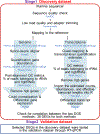Transcriptomic Profiles Associated with Experimental Placebo Effects in Chronic Pain
- PMID: 38711244
- PMCID: PMC11251865
- DOI: 10.1002/cpt.3286
Transcriptomic Profiles Associated with Experimental Placebo Effects in Chronic Pain
Abstract
Gene expression networks associated with placebo effects are understudied; in this study, we identified transcriptomic profiles associated with placebo responsivity. Participants suffering from chronic pain underwent a verbal suggestion and conditioning paradigm with individually tailored thermal painful stimulations to elicit conditioned placebo effects. Participants reported pain intensity on a visual analog scale (VAS) anchored from zero = no pain to 100 = maximum imaginable pain. RNA was extracted from venous blood and RNA sequencing and validation tests were performed to identify differentially expressed genes (DEGs) associated with placebo effects, controlling for sex and level of pain. Unbiased enrichment analyses were performed to identify biological processes associated with placebo effects. Of the 10,700 protein-coding genes that passed quality control filters, 667 were found to be associated with placebo effects (FDR <0.05). Most genes (97%) upregulated were associated with larger placebo effects. The 17 top transcriptome-wide significant genes were further validated via RT-qPCR in an independent cohort of chronic pain participants. Six of them (CCDC85B, FBXL15, HAGH, PI3, SELENOM, and TNFRSF4) showed positive and significant (P < 0.05) correlation with placebo effects in the cohort. The overall DEGs were highly enriched in regulation of expression of SLITs and ROBOs (R-HSA-9010553, FDR = 1.26e-33), metabolism of RNA (R-HSA-8953854, FDR = 1.34e-30), Huntington's disease (hsa05016, FDR = 9.84e-31), and ribosome biogenesis (GO:0042254, FDR = 2.67e-15); alternations in these pathways might jeopardize the proneness to elicit placebo effects. Future studies are needed to replicate this finding and better understand the unique molecular dynamics of people who are more or less affected by pain and placebo.
© 2024 The Authors. Clinical Pharmacology & Therapeutics published by Wiley Periodicals LLC on behalf of American Society for Clinical Pharmacology and Therapeutics.
Conflict of interest statement
Conflict of Interest
The authors declared no competing interests for this work.
Figures






Similar articles
-
Gabapentin for chronic neuropathic pain and fibromyalgia in adults.Cochrane Database Syst Rev. 2014 Apr 27;2014(4):CD007938. doi: 10.1002/14651858.CD007938.pub3. Cochrane Database Syst Rev. 2014. Update in: Cochrane Database Syst Rev. 2017 Jun 09;6:CD007938. doi: 10.1002/14651858.CD007938.pub4. PMID: 24771480 Free PMC article. Updated.
-
Dietary interventions for recurrent abdominal pain in childhood.Cochrane Database Syst Rev. 2017 Mar 23;3(3):CD010972. doi: 10.1002/14651858.CD010972.pub2. Cochrane Database Syst Rev. 2017. PMID: 28334433 Free PMC article.
-
Drugs for preventing postoperative nausea and vomiting in adults after general anaesthesia: a network meta-analysis.Cochrane Database Syst Rev. 2020 Oct 19;10(10):CD012859. doi: 10.1002/14651858.CD012859.pub2. Cochrane Database Syst Rev. 2020. PMID: 33075160 Free PMC article.
-
Systemic pharmacological treatments for chronic plaque psoriasis: a network meta-analysis.Cochrane Database Syst Rev. 2021 Apr 19;4(4):CD011535. doi: 10.1002/14651858.CD011535.pub4. Cochrane Database Syst Rev. 2021. Update in: Cochrane Database Syst Rev. 2022 May 23;5:CD011535. doi: 10.1002/14651858.CD011535.pub5. PMID: 33871055 Free PMC article. Updated.
-
Antidepressants for pain management in adults with chronic pain: a network meta-analysis.Health Technol Assess. 2024 Oct;28(62):1-155. doi: 10.3310/MKRT2948. Health Technol Assess. 2024. PMID: 39367772 Free PMC article.
Cited by
-
Predicting Treatment Outcomes in Patients with Low Back Pain Using Gene Signature-Based Machine Learning Models.Pain Ther. 2025 Feb;14(1):359-373. doi: 10.1007/s40122-024-00700-8. Epub 2024 Dec 25. Pain Ther. 2025. PMID: 39722081 Free PMC article.
-
A narrative review of the placebo effect: historical roots, current applications, and emerging insights.Eur J Clin Pharmacol. 2025 May;81(5):625-645. doi: 10.1007/s00228-025-03818-6. Epub 2025 Mar 13. Eur J Clin Pharmacol. 2025. PMID: 40080139 Review.
References
-
- Schmitz J. et al. Positive Treatment Expectancies Reduce Clinical Pain and Perceived Limitations in Movement Ability Despite Increased Experimental Pain: A Randomized Controlled Trial on Sham Opioid Infusion in Patients with Chronic Back Pain. Psychother Psychosom 88, 203–14 (2019). DOI: 10.1159/000501385. - DOI - PubMed
MeSH terms
Grants and funding
LinkOut - more resources
Full Text Sources
Medical
Miscellaneous

